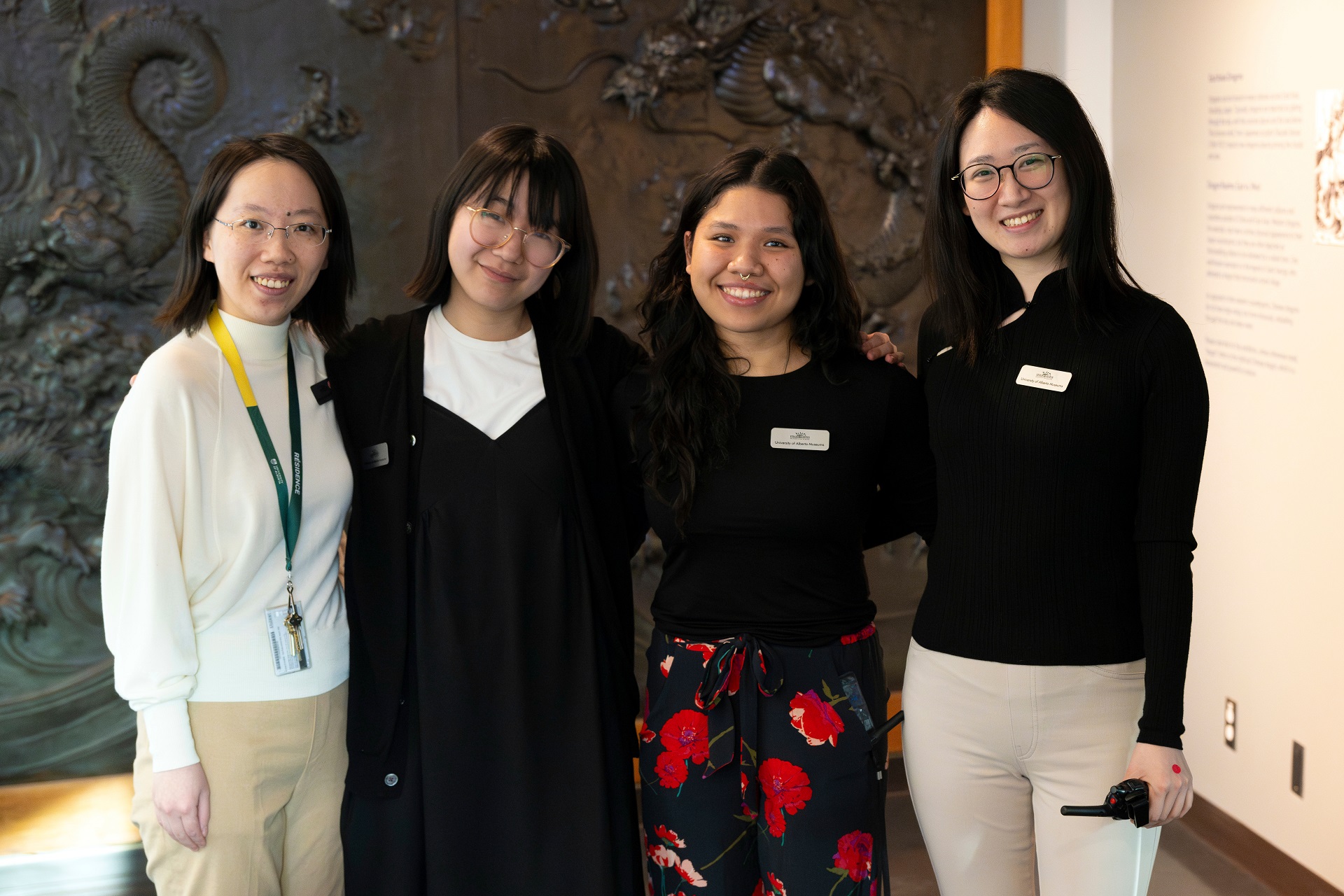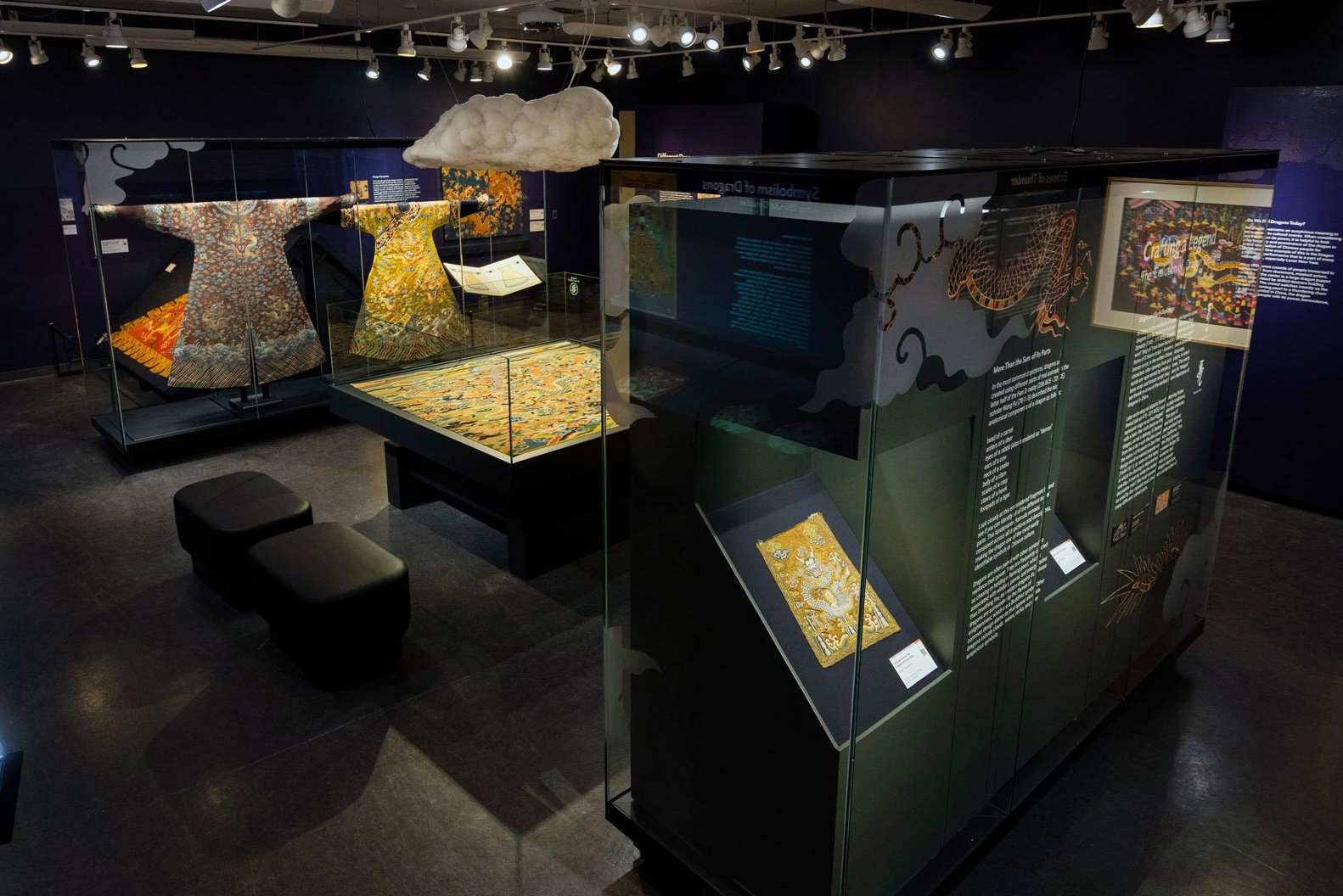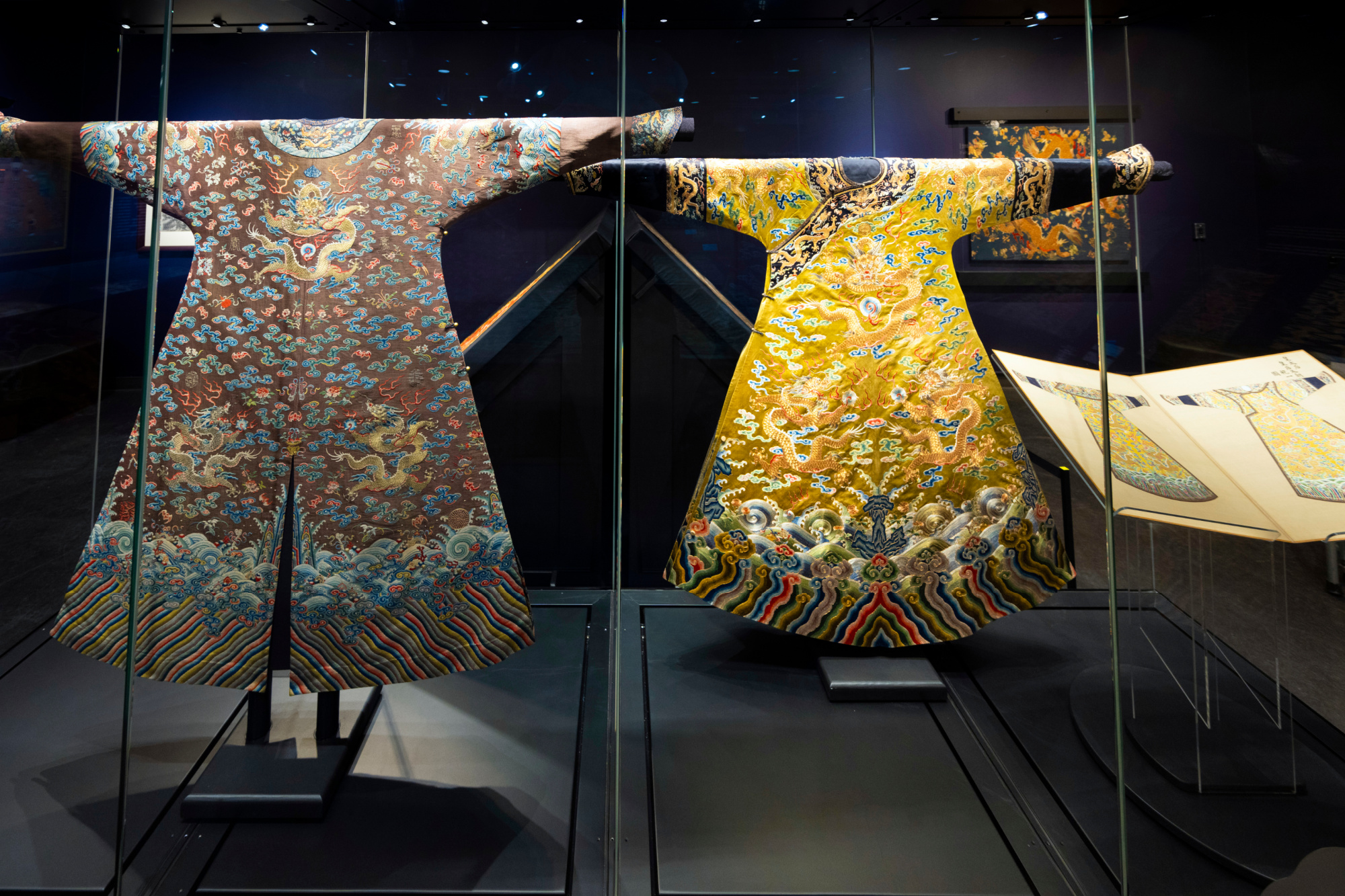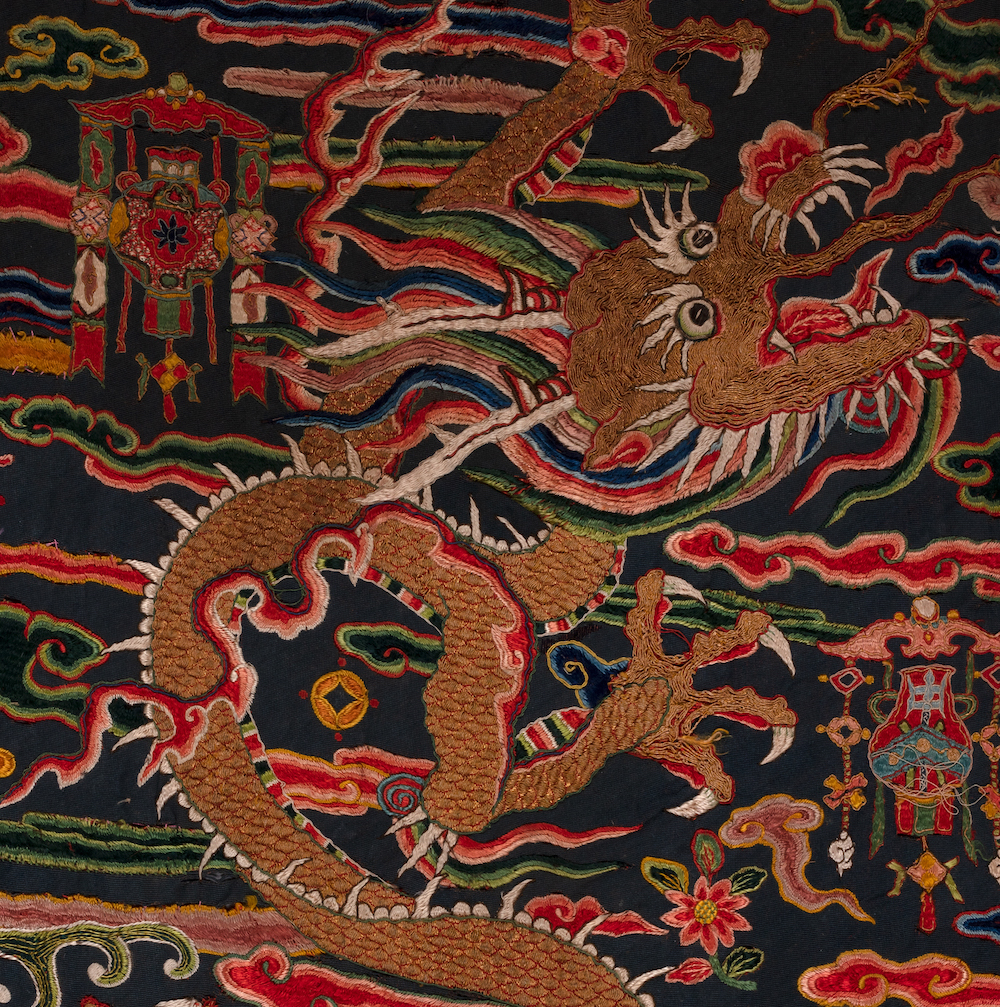Art in Focus: "Cowries" by Braxton Garneau
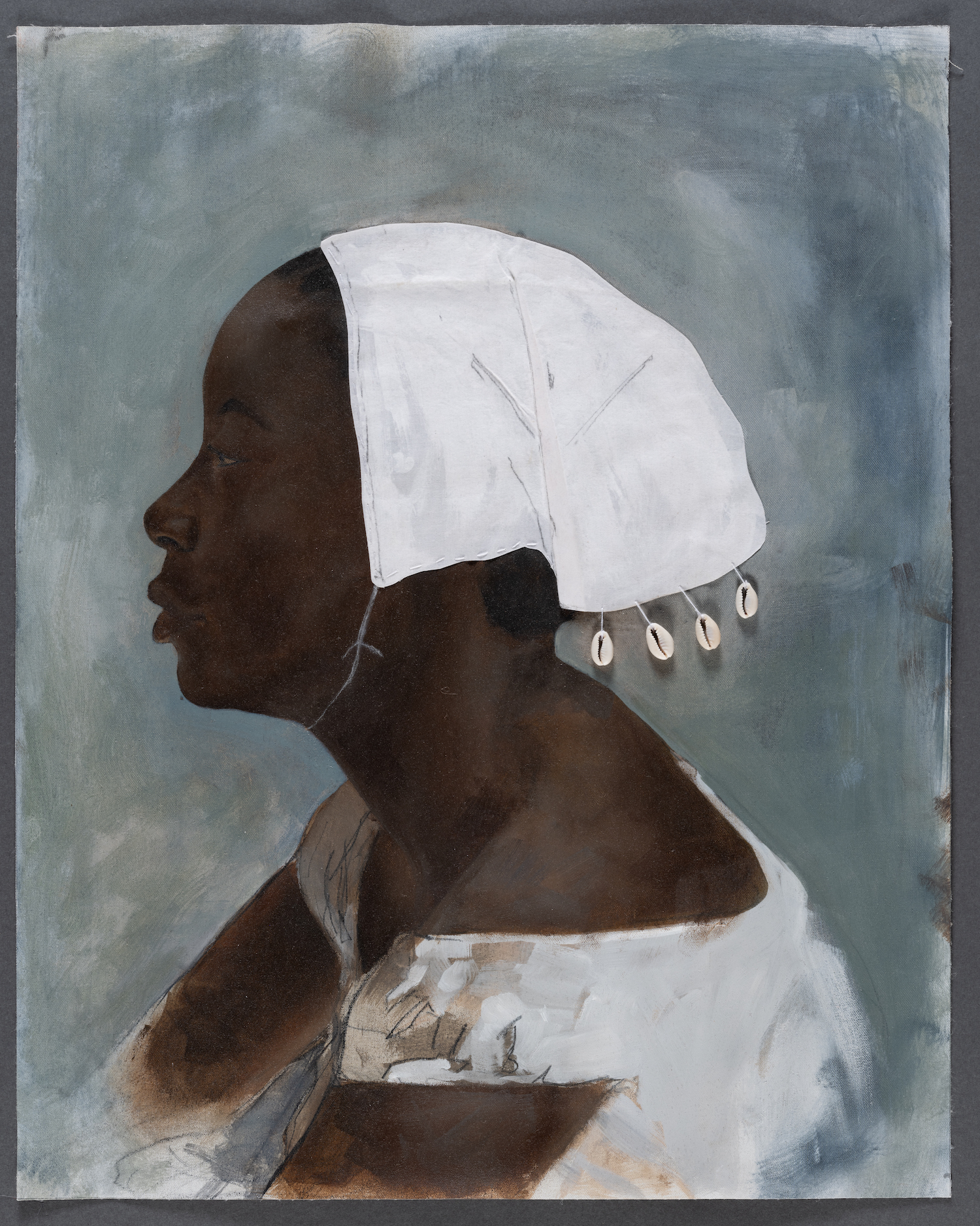
"Cowries", 2021; Painting; Oil and mixed media on canvas; Braxton Garneau: Born Edmonton, Alberta, 1994; University of Alberta Museums Art Collection, University of Alberta Museums; 2021.3.2
“Throughout the history of western cultures,” writes scholar Charmaine A. Nelson, “Black people have been systematically denied the power of the gaze and excluded from the realm of artistic production.”1 Even more troubling, writes Nelson, is that “traditions of naming Blackness and Black womanhood have functioned to produce and reinforce colonial stereotypes.”2 This history also extends to Canadian art: one of the earliest representations of Black womanhood was painted by the French Canadian artist François Malépart de Beaucourt titled Portrait of a Haitian Woman (1786), which reveals the complicated intersections of slavery, portraiture, and representation.
Edmonton-based artist Braxton Garneau’s 2021 painting Cowries (2021.3.2) calls attention to this history, but also combines a personal, studied approach. Cowries, a recent acquisition to the University of Alberta Museums Art Collection, presents a side profile of a young Black woman wearing a white headcover with a cowrie shell fringe. Both the headcover fabric and cowries are sewn on, adding to the overall dimensionality of the painting. The symbolism of the cowries are also important to consider here. Used as money as early as the 14th century, cowries were traded across Africa, Asia and Oceania. They also appeared in spirit bundles and were potentially used as talismans to resist slavery.3
Garneau’s process for creating his paintings starts close to home; most of his subjects are his siblings and extended family. They are posed, photographed, and loosely painted out. The canvas is primed, however there is a looseness in his brushstrokes and moments where the image looks unfinished. He draws inspiration from a variety of sources, and his approach is one that combines “traditional media/subject matter with raw and repurposed material serves to disrupt the historical notion of mastery and to democratize the privilege of viewership.” Garneau points out that he also “revisits traditional handicraft to explore the sociocultural history between humans and colonial goods.”4
The side profile is also a revisiting of trade and colonial goods–particularly in exerting power and wealth. For example, it is most often considered a ‘classic’ pose used to depict rulers and other nobles in coins, portraiture and bas relief sculpture. During the eighteenth and nineteenth century, drawing profile silhouettes became a popular pastime in the United States and could be easily and cheaply made.5
A graduate of the Department of Art and Design at the University of Alberta, Garneau has exhibited his work at the Mitchell Art Gallery, Art Gallery of Alberta and Stride Gallery, among many others. His artistic practice spans painting, printmaking, drawing, film, and installation. In addition to Cowries, the University of Alberta Museums Art Collections also holds Untitled (2021) by Garneau. Together, these works have added to the richness of the Art Collection at the University of Alberta and provide insights on the underrepresented history of western portraiture and subjecthood.1 Charmaine A. Nelson. Representing the Black Female Subject in Western Art. New York and London: Routledge, 2010, 19.
2 Ibid.
3 “Cowrie Shells and Trade Power.” National Museum of African American History and Culture. Accessed March 11, 2022. https://nmaahc.si.edu/cowrie-shells-and-trade-power
4 Braxton Garneau. “About.” Artist website. Accessed March 11, 2022. https://braxtongarneau.com/.
5 “Silhouettes.” Women and the American Story. Accessed March 11, 2022. https://wams.nyhistory.org/building-a-new-nation/American-woman/silhouettes/
This web story is part of the University of Alberta Museums Art Collection Spotlight Series, a collection of web stories aimed to share works of art from the University of Alberta Museums Art Collection with the world. Posted monthly, these stories connect works of art in the Collection to important matters on our campus and in our world.
